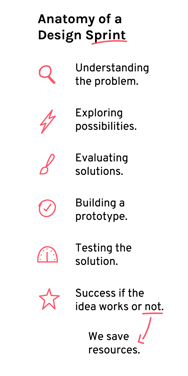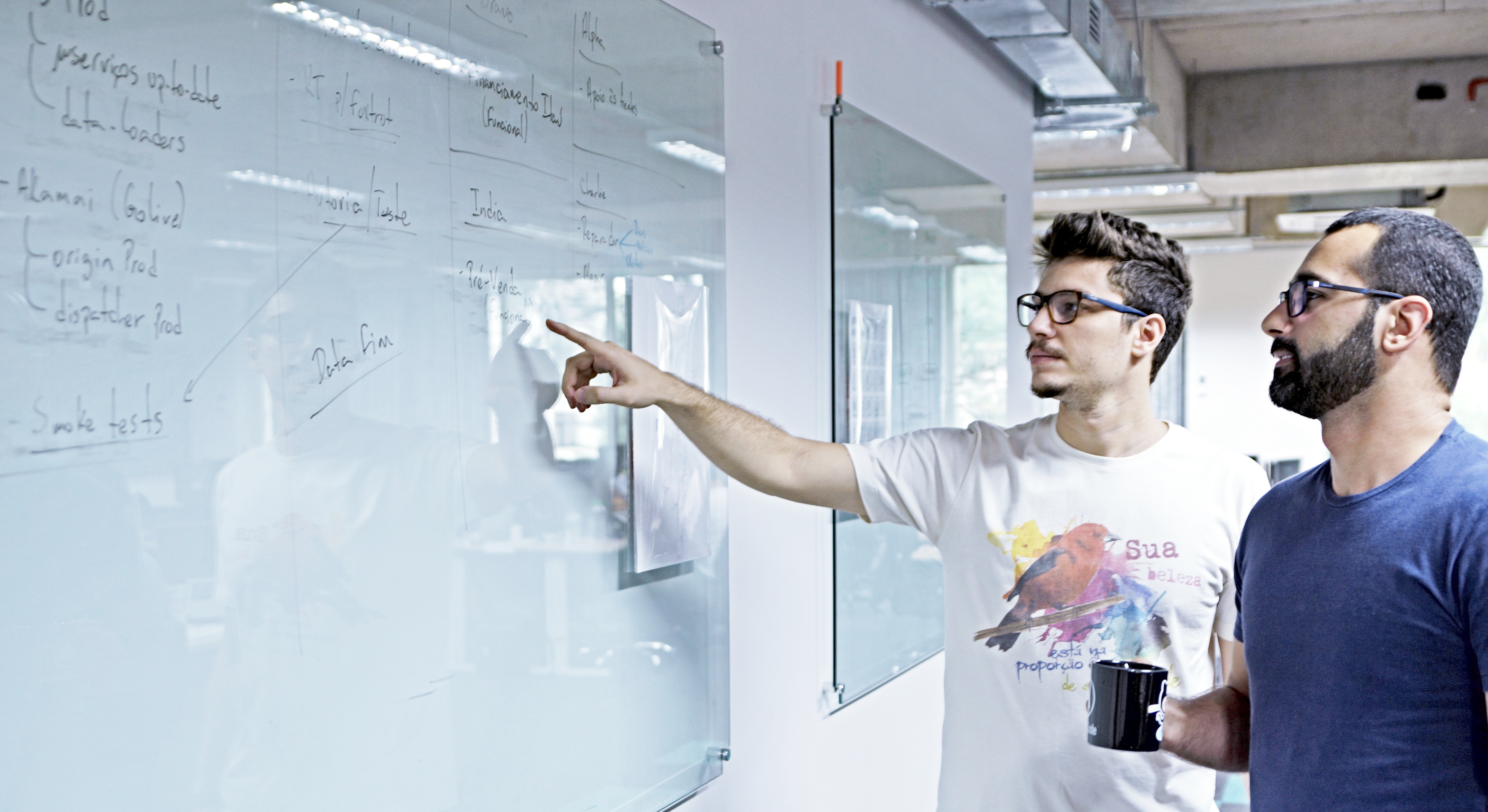In our last Snippet, we defined five ways to create a successful business strategy that improves core business success while seeking innovation opportunities. Today, we'll explore how design thinking-oriented design services help your organization identify high-ROI initiatives.
Why Design Thinking
Design thinking is a philosophy of deeply understanding and empathizing with the end user. It helps decision makers ask questions, challenge assumptions, and reframe problems to identify user-centric solutions through a process that is both iterative and expansive. In this case, the purpose of design thinking would be to ensure that any digitization of the core business and/or any innovation initiatives are meeting real consumer needs. At Avenue Code, design thinking is the philosophy that undergirds all of our design offerings and processes. While we offer specific, hands-on services like UX design, UI design, branding, etc., we also offer bigger-picture consulting services, including service design, design sprints, and design ops.
DESIGN SERVICES
Why Service Design
Service design is a way of measuring user satisfaction and engagement with an entire service or product rather than analyzing user behavior within siloed touchpoints. For example, instead of merely collecting information on user satisfaction with a call center, a mobile app, or a web interface, service design looks at the entire consumer journey holistically to gain a stronger understanding of the consumer’s overall impression of the company. According to Lynn Shostack, “...managing the pieces rather than the whole... makes a company more vulnerable and creates a service that reacts slowly to market needs and opportunities.”
The Benefits of Service Design
One study from McKinsey and Company found that companies without a service design practice experience more customer defection, lost sales, high call volumes, and lower team morale. Companies with a service design practice, on the other hand, experience higher customer satisfaction, more sales, better retention, lower service costs, and higher team morale. In fact, one company reported the following after implementing a service design practice: “A 50 percent increase in customer satisfaction from the starting position, and a 15 percent reduction in the company’s customer-service cost. Employee satisfaction increased by 20 percent and churn related to this journey was cut by more than half.”
The positive results of service design implementations were not limited to one industry, either. In diverse industries - from pay TV to retail banking to auto insurance and beyond - companies saw that perfecting user journeys resulted in faster revenue growth. The takeaway is that companies that improve customer satisfaction experience a corollary growth in revenue when there is a high performance across the entire user journey rather than in isolated customer touchpoints.
Example Service Design Engagement
A typical service design engagement with Avenue Code might include deliverables such as analysis of and complex mapping between front-end operations like the website, customer actions like visits to the website, onstage contact actions like customer chats with support, backstage contact actions like responses to chat questions, and support processes like visitor analytics. These findings would then be mapped and correlated to findings from other areas like mobile apps, individual services/products, brick and mortar customer experiences, call center interactions, and so on to create a comprehensive understanding of the entire consumer journey. A typical timeline might be eight weeks with two service designers, as depicted below:

Because the consumer is at the center of all digitization initiatives, it’s smart to thoroughly map the customer journey prior to beginning any project. Customer mapping can be accomplished through service design. Looking at the entire consumer journey often exposes gaps in service and opportunities to offer a more cohesive and intuitive user experience, so it is often paired closely with the validation of specific project ideas through a design sprint.
WHY DESIGN SPRINTS

Design sprints help companies validate ideas before investing in them. By identifying early on which projects add value and which do not, design sprints can save companies a significant amount of time and
money. It’s important to note that design sprints are used to validate specific problems such as increasing mobile app engagement through the introduction of a new feature rather than debating whether or not to build a mobile app at all.
On the first day of the sprint, the team spends time understanding the problem, the context, the personas, and the current state of the issue (what is and is not working today). On the second day, the team ideates potential solutions, investing a significant amount of time exploring possibilities without critically evaluating the ideas. On the third day, the team evaluates and analyzes all proposed solutions, deciding on the idea that will be tested. On the fourth day, the team builds a prototype of the solution. On the fifth day, the team tests the solution with actual consumers and records reactions, gathering feedback without posing leading questions.
A design sprint is deemed successful if the idea is proven to work, and it is equally successful if the idea does not work because the company avoids pouring resources into unprofitable projects.
WHY DESIGN OPS
Avenue Code also offers consulting services for companies that are just beginning to build their internal design departments and want an experienced partner to ensure that they are on the right track. For three months, Avenue Code works closely with the company’s leadership to help kickstart its design culture, processes, and strategies. This encompasses everything from hiring the right people to structuring the team, cultivating internal talent by hosting workshops, formalizing performance metrics, creating a design system, and defining the timeline and steps for when and how design is involved in each project.
 Each of these design services plays a critical role in a company’s overall digital evolution efforts by creating a culture of design thinking that makes user-centric strategic decisions, providing consumers with a more cohesive brand experience, accelerating time to market for new products/services, strengthening customer engagement and retention, and more.
Each of these design services plays a critical role in a company’s overall digital evolution efforts by creating a culture of design thinking that makes user-centric strategic decisions, providing consumers with a more cohesive brand experience, accelerating time to market for new products/services, strengthening customer engagement and retention, and more.
Digital Enablement
In our next Snippet, we'll discuss how to enable digital evolution through best practices related to people and organization, data and analytics, and technology. Download our free whitepaper for your complete guide to organization-wide digital maturity.
References
What is Design Thinking and Why Is It So Popular? Rikke Friis Dam and Teo Yu Siang. Interaction Design Foundation.
Designing Services that Deliver, G. Lynn Shostack. Harvard Business Review.
From touchpoints to journeys: Seeing the world as customers do, Nicolas Maechler, Kevin Neher, and Robert Park. McKinsey & Company.
Author
Holly Camponez
Holly Camponez is the Director of Design & Creative Services at Avenue Code. She is passionate about the potential of design thinking to create a positive impact both socially and economically. Holly lives in Northern California with her husband, son, and three cats.






